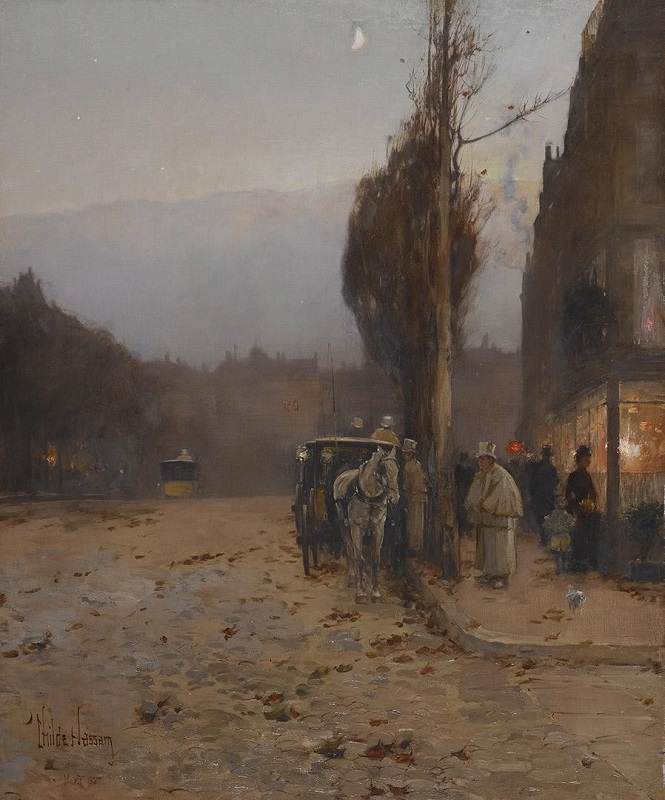
Childe Hassam, (1859 – 1935)
“Paris at Twilight,” 1887
Oil on canvas
Crystal Bridges Museum of American Art, Photography by Dwight Primiano.
As the days grow shorter, many of us we find ourselves coming home from work around 5:30, just as it is beginning to get dark. Paris at Twilight, by Childe Hassam, is a painting that truly captures the spirit of that moment between day and night, when the stars are out but the memory of sunlight still hangs in the air. This particular painting was created during Hassam’s time in Paris, a short period of three years during which he began his distinguished career as a uniquely American Impressionist painter.
Although Hassam had established himself in Boston with his watercolors and illustrations, he felt that to become a true painter, he must study in Paris. After all, the previous 20 years of American art had been dominated by French influence. American artists had to compete with French artists for patronage and fame, and many abandoned their own subject matter in favor of subjects that were more typically French.
When Hassam and his wife Maude sailed to Europe in 1886 to settle in the Boulevard de Clichy in Montmartre, they were in good company. Other artists in his neighborhood included famous Impressionists such as Georges Seurat, Paul Signac, and Mary Cassatt. Aside from these established painters, there were also many young American men in Paris who hoped to pursue a career in the arts. But Hassam was older and more established, and he was not interested in their youthful fraternity and bohemian wanderings. He mainly kept to himself in order to immerse himself in the French community and make the most of his sojourn in Paris. Nevertheless, just like many other Americans, Hassam enrolled in the Académie Julian to study the French style.

Childe Hassam
Hassam embraced the Impressionist style of painting, but he distinguished himself by adding his own personal style that he had developed in Boston. Unlike French painters of urban environments, Hassam did not focus on the anonymity of city life, but its elegance. He often painted fashionable Parisians throughout their daily life. He was what French poet Baudelaire called a “passionate spectator,” interested in new boulevards and fashionable residents, as well as the old streets of Montmartre and his working-class neighbors. Twilight in Paris, with its subdued palette, was typical of Hassam, whose paintings during this time were often set in gray and rainy settings.
By the end of his three years in Paris, Hassam was ready to return home. Although formal study frustrated Hassam–he later remarked that his education in Boston had been preliminary, and that his French studies had been superfluous–he still benefited from the exhibitions, museums, and the multitude of various styles and subjects that the art world in Paris offered. Though brief, his time in France helped make Childe Hassam the painter that we know today, a pioneer of American Impressionism.
Source: Weinberg, H. Barbara. “Hassam in Paris.” Childe Hassam. New York: Metropolitan Museum of Art, 2004. 53-85. Print.
To learn more about Childe Hassam, visit the Crystal Bridges Library:



